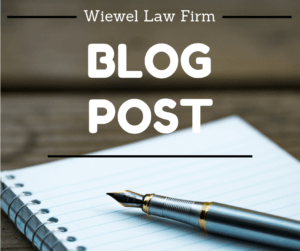
A QPRT is a unique financial tool
A Qualified Personal Residence Trust (QPRT) is a unique financial tool used in estate planning to reduce the potential estate tax liability by transferring a principal residence or vacation home into a trust. As an irrevocable type of trust, a QPRT allows the grantor to remain in the home for a predetermined term of years, making it a strategic choice for those looking to manage their estate tax effectively. Learn more about QPRTs.
In the realm of estate planning, QPRTs serve a dual purpose. They provide a mechanism to transfer a residence at a reduced tax cost, while ensuring that the property remains part of the family legacy. This is particularly advantageous in the context of rising real estate values and the corresponding increase in estate tax liabilities.
The structure of a Qualified Personal Residence Trust is centered around its ability to freeze the value of the residence at the time of the transfer to the trust. When a residence is transferred into a QPRT, its value for gift tax purposes is determined at that time. This is beneficial if the property appreciates in value over the trust term, since the appreciation occurs outside the grantor’s taxable estate.
Furthermore, the trust term is a critical component of a QPRT. It is during this period that the grantor retains the right to live in the home. The length of the trust term can significantly impact the tax benefits of the QPRT, making it essential to choose a term that aligns with the grantor’s estate planning objectives. American Bar Association’s insights on estate planning.
One of the primary benefits of using a QPRT in estate planning is the potential for significant estate tax savings. Transferring a residence into a QPRT removes the property from the grantor’s taxable estate, potentially leading to lower estate taxes upon the grantor’s death.
In addition to estate tax advantages, a QPRT also offers protection for the principal residence. This ensures that the residence can be passed down to beneficiaries, typically the grantor’s children, at a reduced tax cost. It’s a strategic way to preserve a valuable family asset for future generations, while minimizing the estate tax burden.
Creating a Qualified Personal Residence Trust involves a few key steps. The first step is to determine the value of the residence, which will be based on its fair market value at the time of the transfer. This valuation is crucial for calculating the gift tax implications of the transfer.
Choosing the right trust term for your QPRT is equally important. The term should be long enough to offer substantial tax benefits but not so long that the grantor is unlikely to outlive it. If the grantor does not outlive the trust term, the residence reverts back to the estate, negating the tax benefits. Guidance from the National Association of Estate Planners & Councils.
When using a QPRT for your primary residence, it’s important to understand the rules surrounding occupancy. During the trust term, the grantor has the right to live in the home. This right is crucial, as it allows the grantor to continue enjoying their home while reaping the trust’s benefits.
Transferring your primary residence to a QPRT can be a smart estate planning move. It allows you to reduce your taxable estate, while maintaining your lifestyle. However, it’s essential to comply with all the trust requirements to ensure that the tax benefits are realized.
A QPRT can also be used effectively for a secondary or vacation home. The same principles apply: the home is transferred into the trust, potentially reducing estate taxes while allowing continued use of the property during the trust term.
However, there are some specific considerations when using a QPRT for a vacation home. Since these properties are often not the primary residence, it’s essential to understand how the trust will affect your use of the property and any potential rental income.
Understanding the tax implications of a QPRT is crucial. For estate tax purposes, the transfer of the residence to the QPRT is treated as a gift, but the grantor’s retained interest reduces the value of the gift in the property. This can lead to significant gift tax savings.
Income tax considerations are also important. The grantor of a QPRT typically continues to pay the property taxes and can deduct these payments on their personal income tax return. This arrangement can be beneficial from an income tax perspective.
What happens at the end of the QPRT term is a critical aspect of the trust. If the grantor outlives the term, the property is transferred to the beneficiaries, typically without additional estate or gift taxes. This is the ideal scenario, since it maximizes the tax benefits of the QPRT.
If the grantor wishes to continue living in the home after the trust term expires, they can lease it from the trust beneficiaries. This arrangement allows the grantor to remain in the home, while ensuring the property remains outside their taxable estate.
At the end of the QPRT term, there may be opportunities to further estate planning objectives by transitioning the property to another trust. This could involve creating a new trust that continues to hold the property for the benefit of family members, providing ongoing estate planning advantages.
This transition is a strategic move that can ensure the continued protection of the property and further estate tax savings. However, it requires careful planning and adherence to tax laws and regulations.
In conclusion, a QPRT is a unique financial tool to minimize estate taxes while protecting your primary or secondary residence. A QPRT can be a powerful tool in your estate planning arsenal by carefully selecting the trust term and understanding the tax implications.
If you’re considering a QPRT as part of your estate plan or have questions about how this type of trust could benefit you, contact our law firm today. Our experienced estate planning attorneys are here to guide you through every step of the process, ensuring that your estate plan is tailored to your unique needs and goals. If you would like to learn more about different types of trusts, please visit our previous posts.
Photo by Curtis Adams









